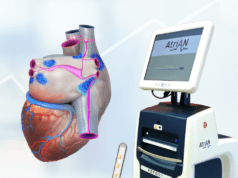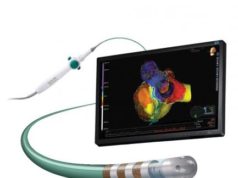Cardiac health apps and wearable clinical technology is on the rise, along with remote monitoring and wireless connection functionality in implantable cardiac devices. While the amount of clinical trials and published papers on new technology in this field is rapidly increasing, researchers face difficulties in overcoming high patient drop-out rates and lack of adherence in app-based trials. Gunther Eysenbach (University of Toronto, Canada) suggests that adherence to new devices fare better when network and community building effects between participants are available.
Speaking at the eCardio and eHealth conference in Berlin, Germany (8–10 November 2017), Eysenbach said, “mobile health, or mHealth, is a term that is already on its way out. It’s not only on one app or apps in your phone, it is about apps everywhere: in your car, in your kitchen appliances, in the clothes you are wearing, in your home.” Eysenbach is a publisher and editor of the Journal of Medical Internet Research (JMIR): mHealth and uHealth, the term “uHealth” referring to ubiquitous health—the network of apps and monitors described by Eysenbach, or a medical version of the so-called internet of things.
While the medical world is adjusting to new treatment strategies involving increasingly sophisticated technologies in remote wireless monitoring, personalised imaging and modelling, and artificial intelligence analysis, patients’ relationships with technology are already changing. Self-reported and automatic data collection is a popular trend, particularly in relation to health, and is not specific to patients or at-risk groups. Smartphone apps can provide meal plans, workout routines, track progress, and create communities of people on the same fitness, wellness or recovery journey. As a result, smart phones and watches can contain intimate and long-term data, from their movements—asleep or awake—to their blood type. Rather than being seen as invasive, this data collection is clearly accepted and welcomed by the owners of the 125.5 million wearable devices sold in 2017, a number estimated by the International Data Corporation (IDC) worldwide quarterly wearable device tracker.
Many therefore see the field of apps and wearable technology as an area full of potential for clinical use, with remote monitoring and patient engagement often at the centre of the argument for realising that potential. Certainly, research is growing in clinical wearables and mobile health technology, with a reported “enormous increase in submissions” annually to JMIR: mHealth and uHealth, Eysenbach said at the eHealth and eCardio meeting. However, as Eysenbach noted, attrition in app- or web-based trials due to non-adherence and drop-out of patients is an issue that most investigators of such trials should be prepared for. “That is why so many eHealth randomised clinical trials fail”, Eysenbach added, estimating a 20–30% failure rate of registered clinical trials in the field. An important factor in study participant adherence is a lack of obligation and motivation to continue. This is not only observed within clinical trials, as similar trends can be seen in the quick decline of usage in popular commercial wearable health monitors after the first day of use, as demonstrated in data presented by Eysenbach showing Fitbit devices’ long-term user adherence. He pointed to study designs that can tackle the issue through networks and communities built around the device, which also serve to remind patients or study participants to continue device usage, but acknowledged that more research is needed to optimise such “remote and patient-led” trial designs.
Reasons for clinical trial failure and high patient drop-out rates is often also related to technical difficulty and flaws in device design or usability and interface issues. Despite the high anticipation of an impending clinical app and wearables revolution, many new apps also seem to be missing the mark, with “substantial performance differences” found in commercially available heart-rate measuring smartphone apps, a study by Thomas Copetti (University Hospital of Zurich, Switzerland) et al recently reported in the European Journal of Preventive Cardiology.
Nevertheless, as the IDC wearable device tracker team’s research manager Ramon T Llamas pointed out in a June 2017 statement, “the wearables market is entering a new phase”, adding that we should “expect digital assistants, cellular connectivity, and connections to larger systems, both at home and at work.” Llamas agrees with the assessment that the device market is about to explode, at which point he predicts a “proliferation in the diversity of devices brought to market, and a decline in prices that will make these more affordable to a larger crowd.” Indeed, that proliferation is perhaps edging closer, with the recent US Food and Drug Administration (FDA) clearance of the first Apple Watch medical device accessory: an electrocardiogram (ECG) smartwatch attachment designed to identify arrhythmia









